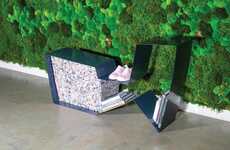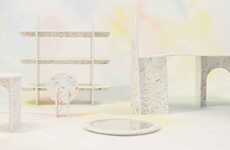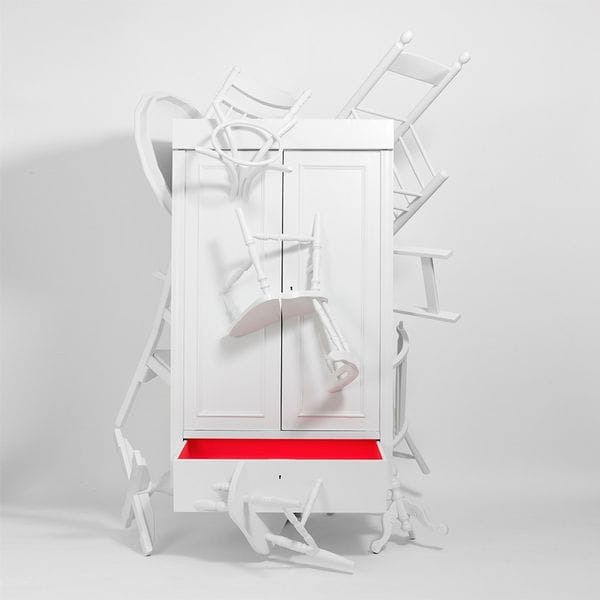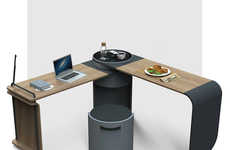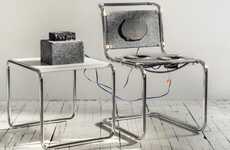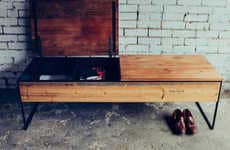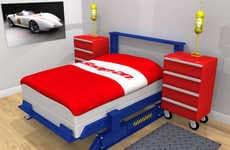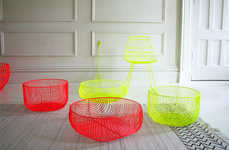
The Trash Closet Project is Bringing Awareness to Our Wasteful Ways
Farida Helmy — April 3, 2014 — Eco
References: lucasenlucas & freshome
Using furniture found on the streets of Amsterdam, The Trash Closet is both a statement against furniture waste and a functional storage unit.
Designed by Marijke and Sander Lucas using leftover furniture that would have probably ended up in a landfill like all the other wasted furniture, The Trash Closet is recycled by the two Dutch designers to create something both visually aesthetic and useful.
The designers are using this project as a symbol of our horrible global furniture waste habit which sends millions of tons of furniture straight into landfills. Wanting to push for recycled furniture to be more environmentally conscious, the designers are hoping people become more aware and do something about this wasteful catastrophe.
“Considering the environmental devastation occurring on a global-scale; ranging from deforestation in the Amazon to our global consumerism crisis, The Trash Closet is intended to be an aesthetic attention grabber with the purpose of educating individuals to be more cautious with what they do with old furniture,” says Sander Lucas.
Designed by Marijke and Sander Lucas using leftover furniture that would have probably ended up in a landfill like all the other wasted furniture, The Trash Closet is recycled by the two Dutch designers to create something both visually aesthetic and useful.
The designers are using this project as a symbol of our horrible global furniture waste habit which sends millions of tons of furniture straight into landfills. Wanting to push for recycled furniture to be more environmentally conscious, the designers are hoping people become more aware and do something about this wasteful catastrophe.
“Considering the environmental devastation occurring on a global-scale; ranging from deforestation in the Amazon to our global consumerism crisis, The Trash Closet is intended to be an aesthetic attention grabber with the purpose of educating individuals to be more cautious with what they do with old furniture,” says Sander Lucas.
Trend Themes
1. Recycled Furniture Designs - The Trash Closet Project highlights the potential of using discarded furniture to create functional and aesthetic storage units.
2. Environmental Awareness Campaigns - The Trash Closet Project is using design to raise awareness of our global furniture waste habit and inspire people to take action towards a more sustainable future.
3. Circular Economy Innovations - The Trash Closet Project exemplifies how repurposing discarded materials can lead to efficient and innovative solutions for reducing waste and promoting a circular economy.
Industry Implications
1. Furniture Manufacturing - The Trash Closet Project presents an opportunity for furniture manufacturers to explore more sustainable production methods that leverage recycled materials and reduce waste.
2. Environmental Advocacy Organizations - The Trash Closet Project provides a powerful case study for environmental advocacy organizations to show how design can be used to mobilize people towards more sustainable practices.
3. Interior Design - The Trash Closet Project introduces a new trend in interior design, where recycled and repurposed furniture can add a unique and eco-friendly touch to any space.
4.6
Score
Popularity
Activity
Freshness




